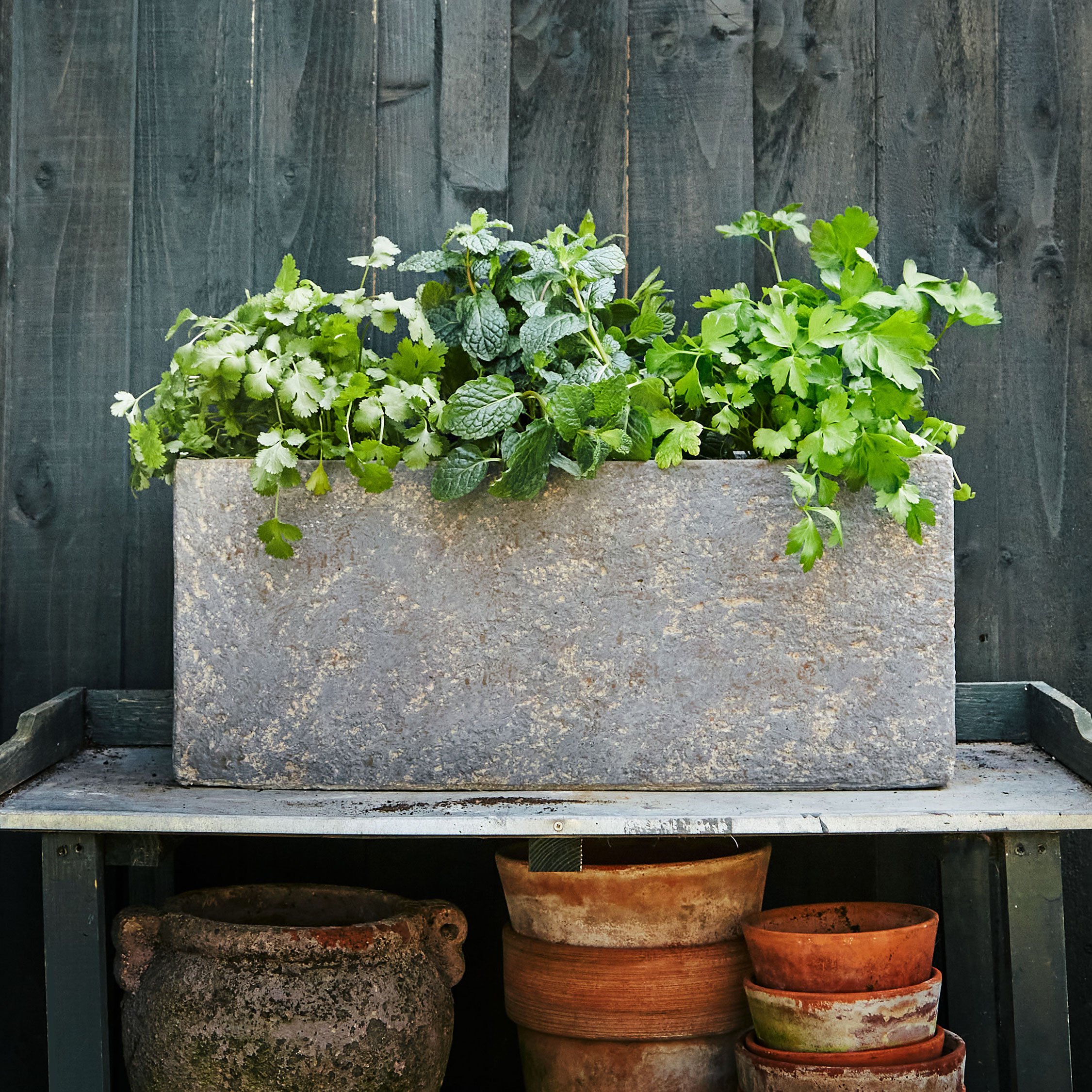Choosing the right pot for your plant
Sponsored post
This post comes to you in collaboration with Sproutl, a UK-based gardening startup where you can shop the UK’s best independent garden and outdoor living brands, all in one place. Sproutl curates Collections that let you effortlessly choose plants and pots that work together, including their Front Door Makeover Collection, One Pot Herb Garden and Instant Impact collection. Sproutl’s compost calculator that lets you know how much compost you'll need based on your chosen pots, and all collections include Sproutl Care (foolproof guides to keep plants alive). Shop at sproutl.com.
The Apta Cut Stone Trough is available from Sproutl’s One Pot Herb Garden collection.
Finding the right container for your new plant is not always easy - what shape and size should you go for? Terracotta, wood, or something else? These tips will help you make choices that really work…
Choose your material
Containers come in a range of materials: if your pots will be outside year-round, make sure they are labelled as ‘frost resistant’ or ‘frostproof’: the latter tend to withstand lower temperatures the best.
Unglazed terracotta pots are perfect for a cottage garden or Mediterranean style, but they can dry out more quickly. That’s because the material is porous, meaning water can evaporate through the sides, especially in hot weather. They are heavy, which can be handy in a windy location, but can make moving them about hard work. If you are gardening on a balcony or roof garden, check how much weight your structure can withstand as pots full of wet soil will add a lot of extra load!
Pots and plants from Sproutl’s Instant Impact Collection.
Glazed terracotta pots are easy to keep clean and tend to hold onto moisture longer than unglazed terracotta. They can add a pop of colour to your space, or blend in: choose black pots if you want the container to blend in, leaving the plant as the star.
Cast stone pots come in neutral tones so are prefect for adding a touch of understated style. They are heavy to move but should last decades.
Wooden troughs and planters can de tough and longlasting. Make sure the wood used is FSC certified and has been treated to prolong its life. Wood has good insulation properties so can protect rootballs from extremes of temperature.
Plastic pots are lightweight and cheap, and often feature reservoirs to cut down on watering requirements. They can be hard to recycle and can become brittle after a few years.
Recycled materials can make a great choice for containers: everything from fibreglass and plastic to rubber tyres are being turned into pots. These are usually durable, lightweight and give your garden a modern, minimalist look.
Consider size and shape
If you don’t have much space, don’t assume you have to opt for lots of small pots: one or two large pots help to give the illusion of space in a tight spot.
Think about shape, too: square planters are more efficient on the space front, but do use slightly more compost to fill. Troughs are useful for narrow spaces such as balconies and side returns.
If you opt for a tall pot, make sure that the plant inside is not too tall, which could make the whole setup top heavy and liable to fall over in high winds. Adding a brick or two to the base before putting the compost in can help if you are using a more lightweight container.
Pots with sides that curve inwards towards the top tend to make less mess when watered, but they can make life difficult when repotting as the rootball often gets stuck inside.
Caring for containers
Placing pot feet (or pieces of roof tile) under pots in winter can help to promote drainage.
In summer, a drip tray under pots will save on water runoff cut down on watering.
If you have a huge pot and want to cut down on the amount of compost you’ll need, you can fill the base with something bulky - try a bunch of bubble wrap, empty plastic nursery pots placed upside down or plastic bottles (don’t use polystyrene as it tends to break up and is hard to recycle).
Unglazed pots with a rough finish can develop a covering white ‘bloom’ of mineral salts from hard water or fertilisers, or deposits of green algae. These can be removed with water and a wire brush when the pots are empty.
If you go away regularly in the summer months, pots with an inbuilt water reservoir can save your plants from drought stress; or install a self watering system.
‘Grey’ water from your washing up bowl or bath can be used to water ornamental plants in the summer. Here’s a useful RHS page on the subject of using grey water.


